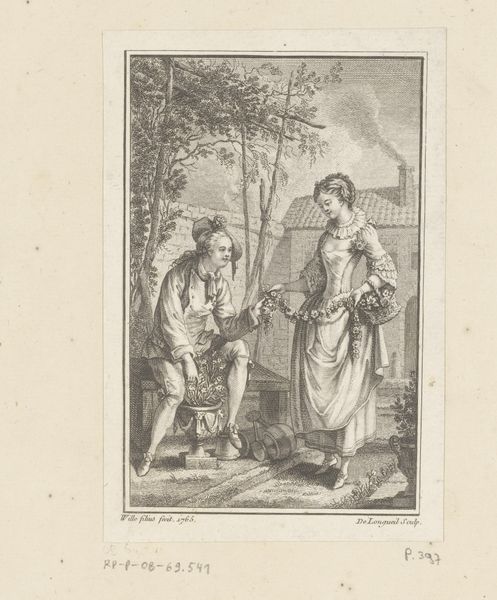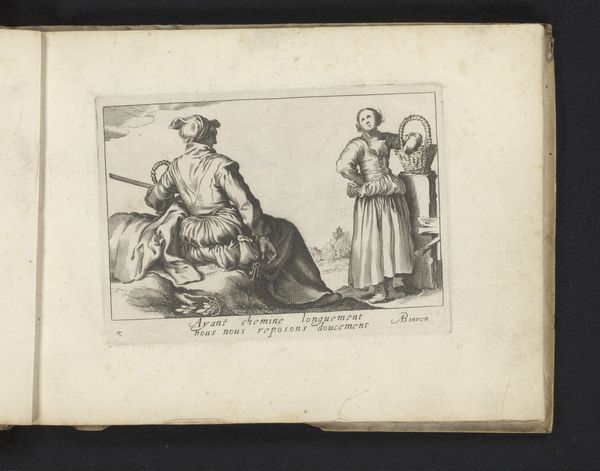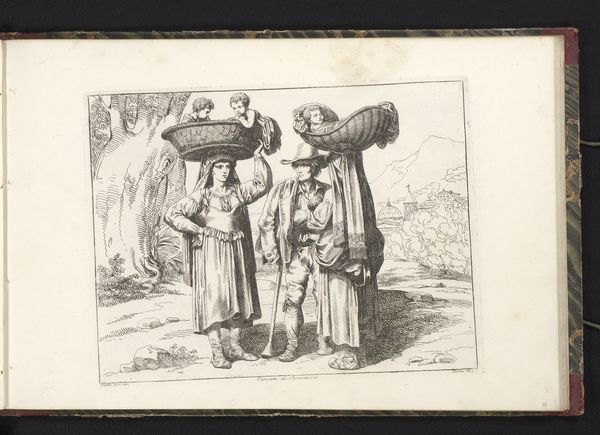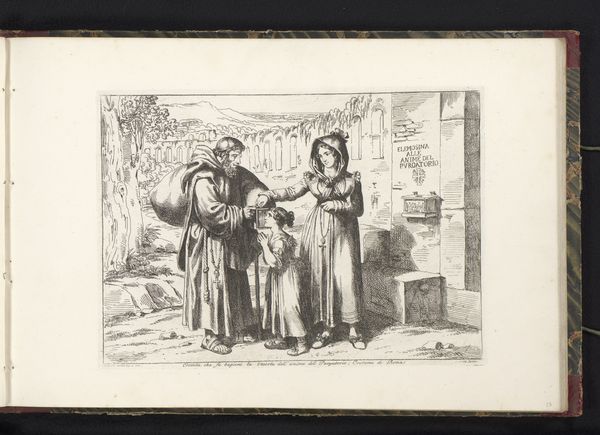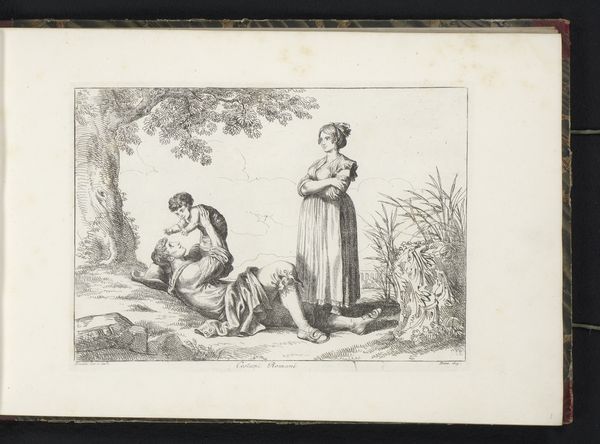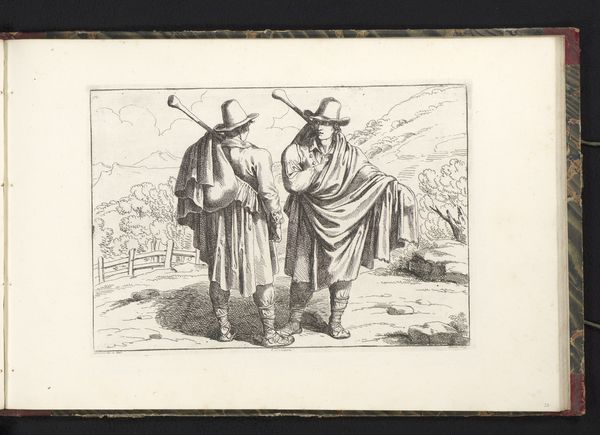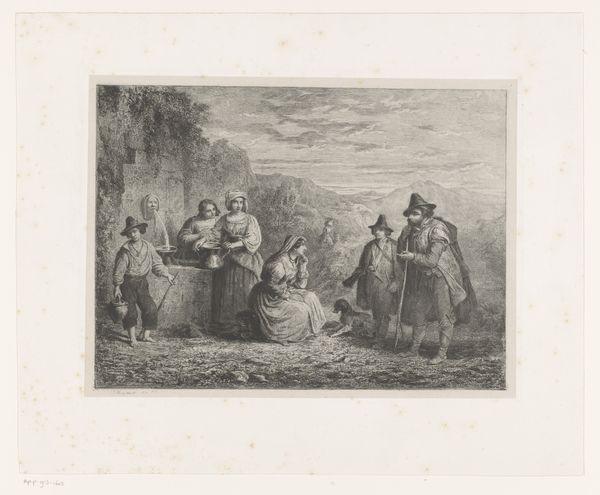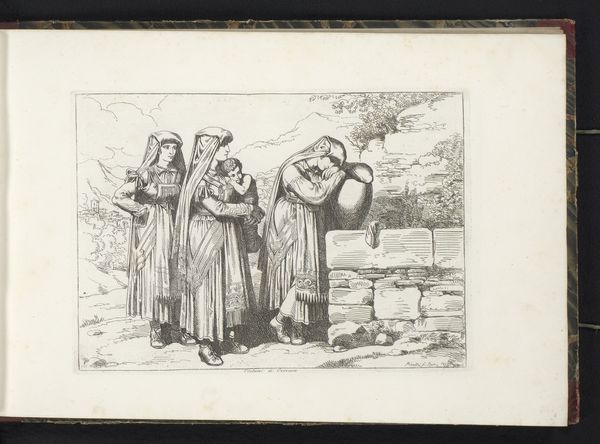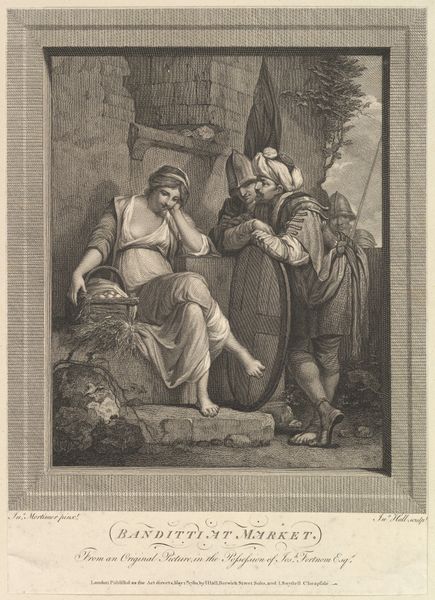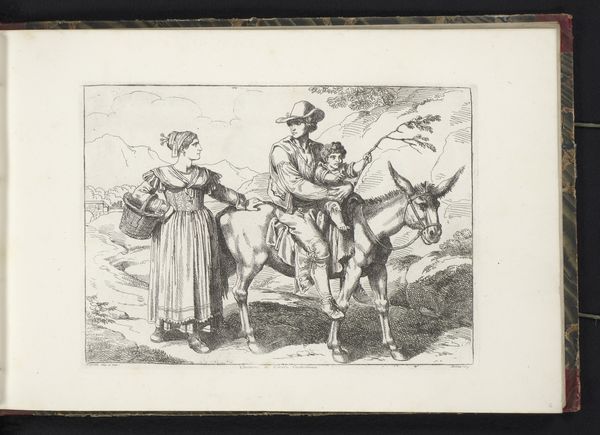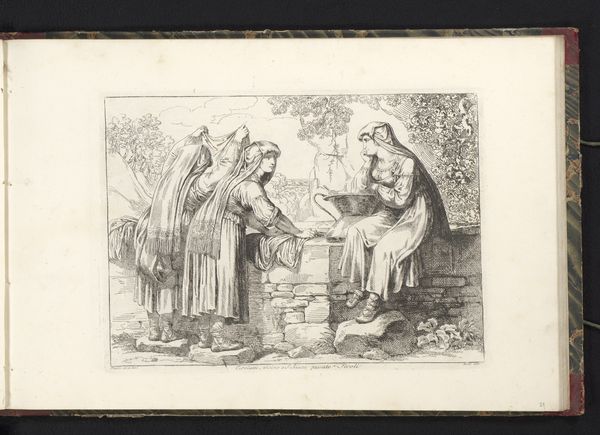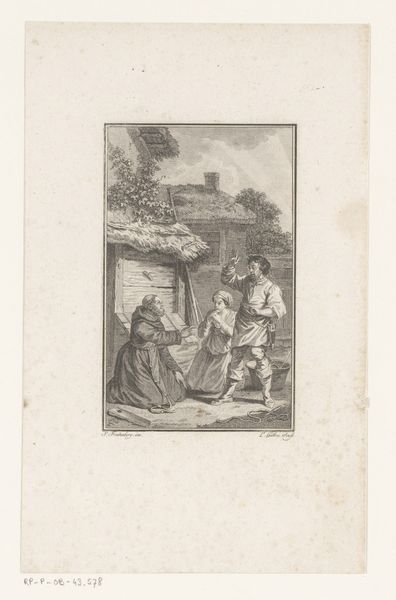
drawing, ink, pen
#
drawing
#
landscape
#
figuration
#
ink
#
coloured pencil
#
romanticism
#
pen-ink sketch
#
pen
#
history-painting
Dimensions: height 202 mm, width 278 mm
Copyright: Rijks Museum: Open Domain
Editor: This is Bartolomeo Pinelli's "Herder en vrouw uit de omgeving van Rome," created around 1820 using pen and ink. It strikes me as a scene that romanticizes rural life, but I wonder if there's more to it than just a pretty picture. What do you see in this piece? Curator: Beyond the romantic idealization, it's crucial to consider the socio-political context. Pinelli, working in the early 19th century, was producing these images for a market deeply interested in Italian national identity. But whose Italy are we seeing? Is it a true reflection, or a carefully constructed image that conveniently omits the complexities of poverty and gender inequality? Look closely at the woman; does she have agency, or is she just a decorative object within the landscape? Editor: That’s a compelling point. I hadn’t considered the potential for an underlying commentary on the roles assigned to men and women within that rural society. Curator: Precisely! Consider her positioning near the water jug, almost a symbol of her domestic duties, compared to the shepherd freely roaming the landscape. Pinelli presents a visual hierarchy, and we need to be critical about the narratives embedded within. Is this Romaticism used to naturalize those differences? Editor: So, by looking at these figures through the lens of gender and class, we can uncover the power dynamics at play in this seemingly idyllic scene? Curator: Exactly. It prompts us to ask whose stories are valued and preserved in art history. Editor: I see what you mean; analyzing the composition with that in mind helps reveal hidden power dynamics within a romanticized vision of the past. Thank you for shedding light on the social complexities within. Curator: It is important to interrogate beyond face value and unearth a broader historical context to gain a critical awareness of these artworks.
Comments
No comments
Be the first to comment and join the conversation on the ultimate creative platform.

